Frozen Shoulder
Print PdfPatient Information Booklet
Manipulation under Anaesthetic (MUA) for release of shoulder contracture with/without Arthroscopic release of shoulder contracture and Injection of Steroid
This technique is used in the treatment of frozen shoulders. A shoulder becomes frozen when the soft tissues around the joint become tight and short (i.e. contracted). This prevents the shoulder from moving and leads to the pain and stiffness with which you are familiar.
The problem may resolve over time but it can take up to two years.
The Operation
The aim of the manipulation is to reduce the recovery time by stretching the joint by the surgeon in a controlled maner, to gain full range of movement. This is combine with an injection of local anaesthetic and steroid to reduce inflammation and pain.
There may be need to proceed and perform further arthroscopic release of the contracture, if the manipulation is not successful. This operation is done by key hole surgery; usually through two or three 5mm puncture wounds. It involves examination of the shoulder joint using a tiny telescope with television camera introduced through a key hole. It involves cutting of the tight (contracted) tissues in the shoulder with a special electro-cutting/radiofrequency device to release the contracture.
The operation is performed under general anaesthetic and a nerve block (injection in your neck or upper chest) that will make your arm feel numb for 8-12 hours after surgery. This is to allow you to mobilise your shoulder immediately after surgery without pain. When this wears off, the shoulder may well be sore and you will be given painkillers to relieve the pain.
General Advice
You will usually only be in hospital for a day. A doctor/physiotherapist will see you before you go home. You will be given exercises to do immediately after the procedure. These exercises are an essential part of your recovery.
Outpatient physiotherapy should be arranged for the day after your procedure. This should be organised before you are admitted to hospital.
It is essential that you attend regular physiotherapy in the first few weeks following your procedure. Please ensure that your employers are aware of this commitment.
You will be given a sling. This is provided purely to keep your arm comfortable. It may be taken off as much as you wish and discarded as soon as possible. You will be encouraged to use your arm. Your symptoms should be approximately 80% better after three months but may take a year to totally settle.
Complications
As with all surgery there is a risk of some complications. These are rare, but you should be aware of them before your operation.
They include:
Complications relating to the anaesthetic.
Injury to the nerves or blood vessels around the shoulder. Sometimes, the nerves become irritable resulting in pain and stiffness in the upper limb,a condition called reflex sympathetic dystrophy (RSD).
Infection.
Fracture: The upper arm bone (humerus) breaking. This is extremely rare.
Failure of the operation in improving pain or movement in your shoulder. There should be about 75% improvement in symptoms in the first four to six weeks.
Prolonged stiffness and or pain.
A need to redo the surgery.
If you require further information please discuss with the doctors either in clinic or on admission.
What to expect after surgery
- Pain The shoulder will be sore when the nerve block wears off and this may last for the first few weeks. It is important that you continue to take the painkillers prescribed in hospital. Ice packs may also help reduce pain. Wrap frozen peas/crushed ice in a damp, cold towel and place on the shoulder for up to 15 minutes.
- Movement It is of the utmost importance that you begin moving and exercising the arm on the day of the procedure. The sling should be discarded as soon as possible. Adequate pain relief will enable you to perform the exercises demonstrated by the physiotherapist. Try to use the arm for normal daytime activities where possible.
- The Wound: If the keyhole operation is necessary, it is usually done through two or three 5mm puncture wounds. There will be no stitches only small sticking plaster strips over the wounds. These should be kept dry until healed. This usually takes 5 to 7 days.
- Driving: You may drive after one week.
- Returning to work: If you have a desk job you will probably be able to return after one week. You may need slightly longer if your job involves lifting or manual work.
- Leisure activities: These will depend on the range of movement and strength in your shoulder. It is possible to do most things as long as your shoulder feels comfortable. Please discuss specific activities with your physiotherapist.
- Follow up appointments: You will have a follow up appointment at The Shoulder Unit about three weeks following your procedure. You will be reviewed by the surgeon/specialist physiotherapist who will check your progress.
- Progress: This is variable. In the first few weeks your shoulder will be sore although your movements will have improved. Do not be surprised if the soreness affects your daily activities. You should continue to move and use your arm normally. Over the weeks following your surgery you will notice a gradual improvement in movement and pain.
- Exercises: It is essential that you carry out the exercises regularly following your procedure, ideally four to five times per day increasing as able. It is quite normal for you to experience aching, discomfort and stretching when doing the exercises but decrease the exercises if you experience intense or lasting pain.
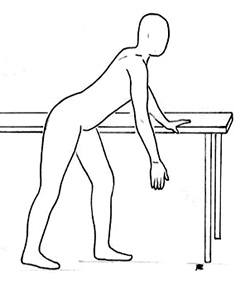
- 1) Stand. Lean forwards. Let your arm hang down. Swing your arm forwards and backwards. Repeat 10 times. (Shown for the right shoulder).
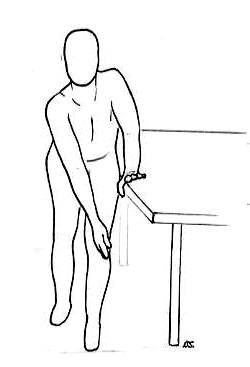
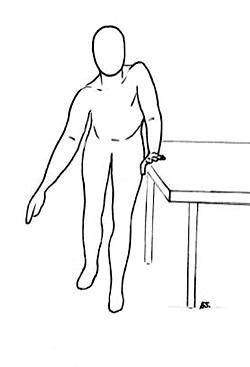
- 2) Stand. Lean forwards.
Let your arm hang down.
Circle your arm clockwise & anti-clockwise.
Repeat 10 times.
(Shown for right shoulder). 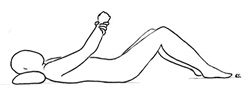

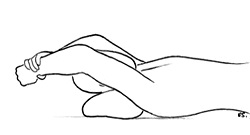
- 3) Lying on your back.
Support your operated arm with the other arm and lift it up overhead.
Repeat 10 times.(Shown for right shoulder) 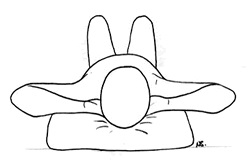
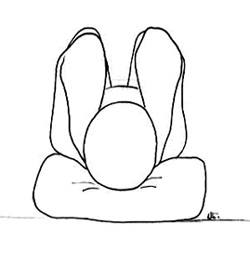
- 4) Lying or sitting. Put your hands behind your head, and gently stretch the elbows towards the floor/ backwards to feel a gentle stretch on the front of your shoulders. Repeat 5 times.
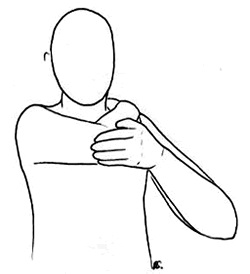
- 5) Take your affected arm across your body to rest the hand on the opposite shoulder. Grasp the elbow with your good hand and gently stretch the arm across your body. Repeat 5 times.
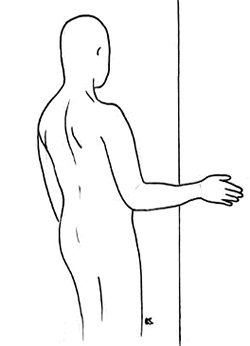
- 6) Standing with elbow flexed to 90 degrees. Hold the elbow close to your body, gently push the hand against a door frame, hold for 5 seconds. Repeat 10 times
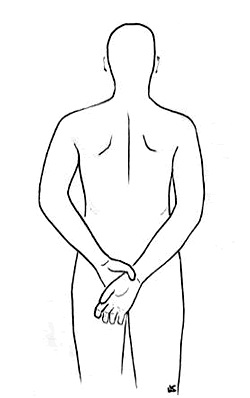
- 7) Standing with your arms behind your back. Grasp the wrist of your operated arm and gently stretch the hand on your affected arm towards the opposite buttock. Then slide your hands up your back. Repeat 5 times
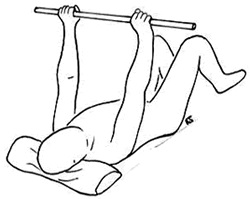
- 8) Lying on your back. Grasp a stick in both your hands. Lift the stick up and gently take overhead until you feel a gentle stretch in your shoulder. Repeat 10 times.
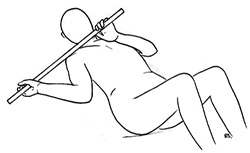
- 9) Lying on your back, keeping the elbow to your side. Hold a stick in your hands. Move the stick sideways, gently pushing the hand on your operated arm outwards. Repeat 5 times
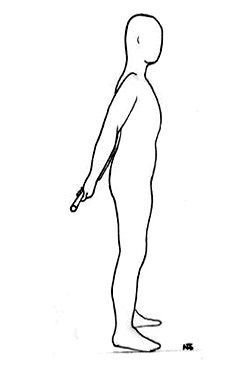
- 10) Standing with your arms behind your back and grasp a stick between them. Gently lift the stick up away from your body. Repeat 5 times
